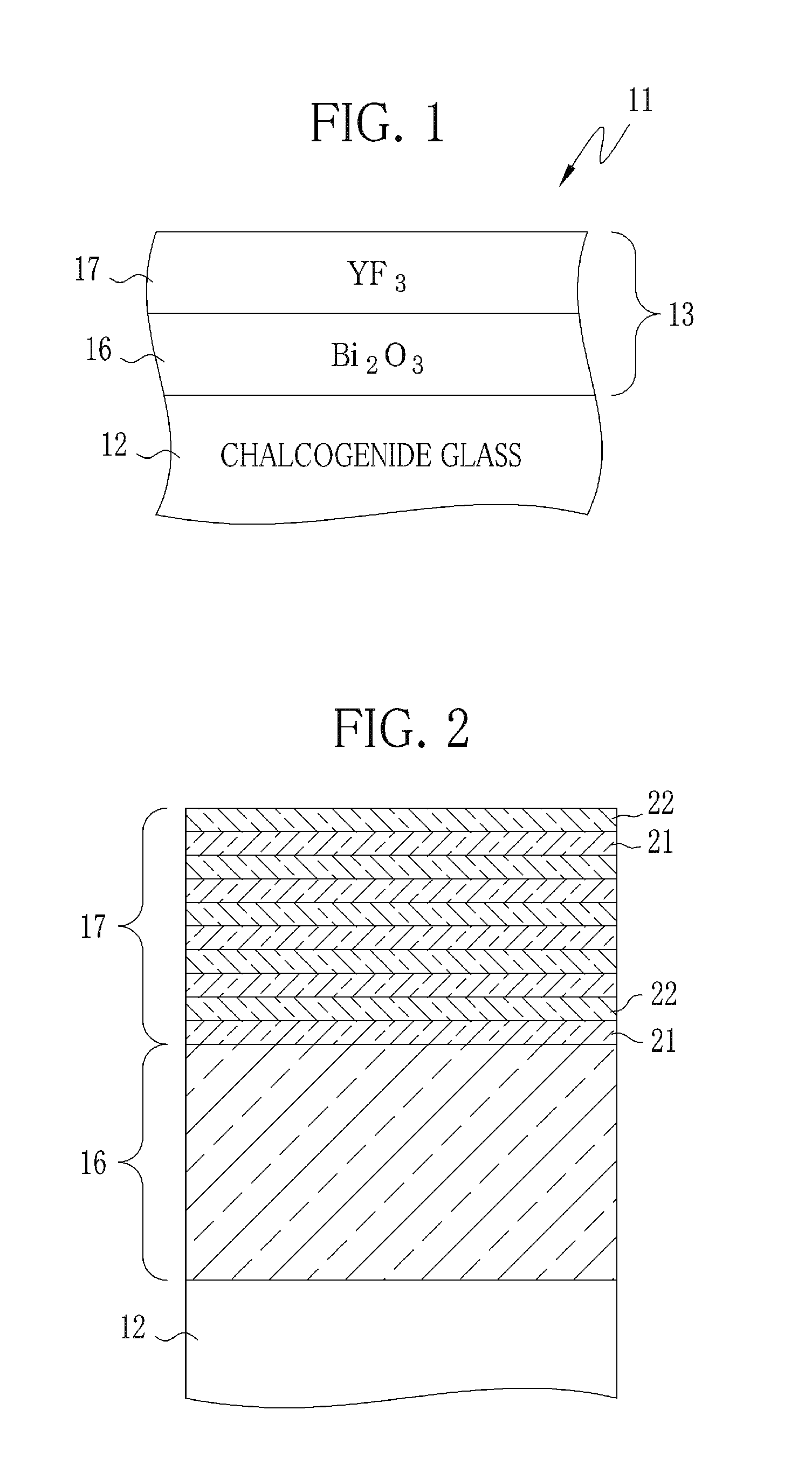Anti-reflection film and infrared optical element
- Summary
- Abstract
- Description
- Claims
- Application Information
AI Technical Summary
Benefits of technology
Problems solved by technology
Method used
Image
Examples
Embodiment Construction
[0030]Referring to FIG. 1, a lens 11 is used in imaging of far-infrared radiation having wavelengths of 3.0 to 1000 μm. The lens 11 is constituted of a base 12 and an anti-reflection film 13 provided on a surface of the base 12. The base 12 is flat in FIG. 1, but is spherical in actual fact. Note that, when an optical element is a prism or filter, the base 12 has a plate shape.
[0031]The base 12 is made of chalcogenide glass, which has a high refractivity of approximately 2.6 in a wavelength band (3.0 to 1000 μm) described above, and has sulfur, selenium, or tellurium (so-called chalcogens) as main ingredients. The chalcogenide glass is inexpensive and superior in processability into a shape of the optical element such as a lens, as compared with other infrared transmitting glass for making a germanium crystalline base and the like. In description below, the base 12 is made of the chalcogenide glass molded into a shape of the lens 11, and the surface of the base 12 is smoothly finish...
PUM
| Property | Measurement | Unit |
|---|---|---|
| Thickness | aaaaa | aaaaa |
| Thickness | aaaaa | aaaaa |
| Electrical resistance | aaaaa | aaaaa |
Abstract
Description
Claims
Application Information
 Login to View More
Login to View More - R&D
- Intellectual Property
- Life Sciences
- Materials
- Tech Scout
- Unparalleled Data Quality
- Higher Quality Content
- 60% Fewer Hallucinations
Browse by: Latest US Patents, China's latest patents, Technical Efficacy Thesaurus, Application Domain, Technology Topic, Popular Technical Reports.
© 2025 PatSnap. All rights reserved.Legal|Privacy policy|Modern Slavery Act Transparency Statement|Sitemap|About US| Contact US: help@patsnap.com



